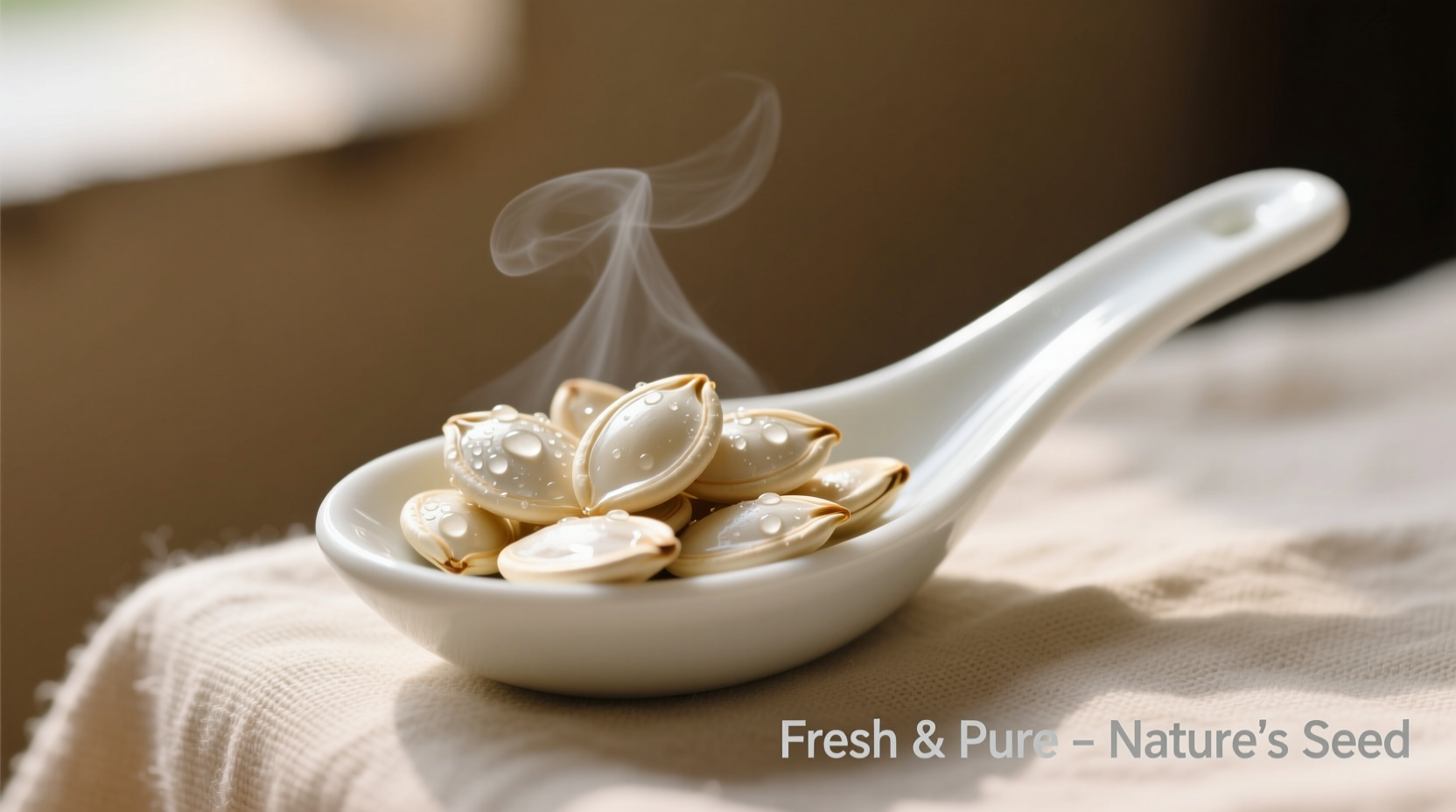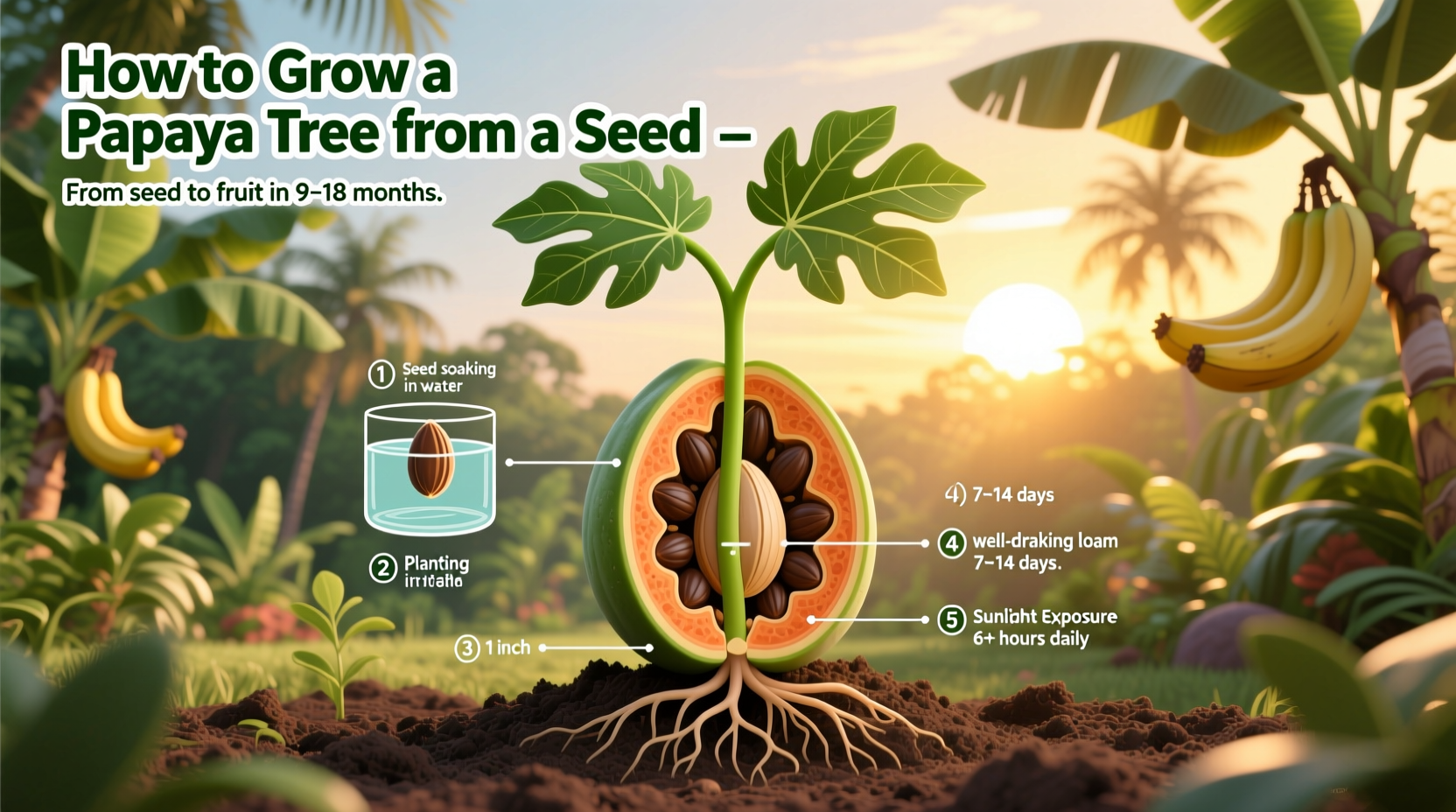Why Growing Papaya From Seed Beats Buying Saplings
Starting papaya trees from seed gives you complete control over plant health from day one. Unlike nursery-bought saplings that may carry diseases or be grafted onto inferior rootstock, seed-grown papayas develop stronger taproots and adapt better to your specific climate. University of Florida horticulture research shows home-germinated papayas establish 30% faster than transplanted saplings when following proper seed preparation techniques.Your Papaya Growing Journey: Step-by-Step
Step 1: Selecting and Preparing Quality Seeds
Choose seeds from perfectly ripe, disease-free fruit. Avoid supermarket papayas when possible—they're often harvested too early and contain immature seeds with poor viability. Local farmers' market papayas provide the freshest, most viable seeds. The University of Hawaii Agricultural Extension confirms seeds lose 50% germination capacity after just 3 months of storage.
Step 2: Germinating Seeds for Maximum Success
Plant seeds immediately after cleaning for best results. Fill small pots with seed-starting mix or a 50/50 blend of perlite and coco coir. Plant 3-5 seeds per 4-inch pot, spacing them evenly and covering with 1/4 inch of soil. Water gently until moist but not soggy. Critical temperature control: Papaya seeds require consistent warmth between 70-85°F (21-29°C) to germinate. Below 65°F (18°C), germination slows dramatically or stops completely. Use a seedling heat mat under trays for reliable results, especially in cooler climates. The USDA Plant Database confirms papaya's tropical origins make temperature control essential for successful germination. Moisture management: Cover pots with clear plastic domes or place inside zip-top bags to maintain humidity. Check daily for mold and water only when the surface feels dry. Most seeds sprout within 14-35 days—be patient as some may take longer.Step 3: Transplanting Seedlings Properly
Wait for the right moment: Transplant when seedlings have 2-3 true leaves and roots begin emerging from drainage holes. Never wait until plants become root-bound in their starter pots. Morning is the ideal transplanting time to reduce shock.| Growth Stage | Timeline | Care Requirements |
|---|---|---|
| Germination | 2-5 weeks | 80°F warmth, high humidity |
| Seedling Stage | 1-3 months | 6+ hours sunlight, moist soil |
| Established Plant | 3-6 months | Regular feeding, deep watering |
| First Fruit | 6-12 months | Calcium supplements, pest monitoring |
Step 4: Ongoing Care for Healthy Trees
Watering strategy: Keep soil consistently moist but never waterlogged. Young plants need daily watering in hot weather, reducing to 2-3 times weekly once established. Mulch with 3 inches of organic material to retain moisture and regulate soil temperature. Nutrition schedule: Feed monthly with balanced 10-10-10 fertilizer during growing season. Increase potassium as plants mature to boost fruit production. The University of California Cooperative Extension recommends adding calcium monthly to prevent blossom end rot in developing fruit. Pruning technique: Remove dead leaves regularly to improve air circulation and prevent fungal diseases. Never cut the main stem—papayas grow from a single terminal bud. When plants reach 3 feet tall, thin to the strongest 1-2 plants per container if multiple sprouted.Climate Considerations and Limitations
Papayas thrive in USDA zones 9-11 but face specific challenges outside tropical regions. In cooler climates (below zone 9), grow in containers you can move indoors when temperatures drop below 55°F (13°C). Container-grown papayas stay smaller—typically 5-8 feet versus 10-15 feet in-ground—but still produce full-sized fruit. Important limitation: Papaya trees grown from seed produce male, female, or hermaphroditic plants. Only female and hermaphroditic plants bear fruit, with hermaphroditic varieties producing the highest quality fruit. Expect to grow 3-4 plants to guarantee at least one fruiting female. Hermaphroditic plants can be identified by their curved, trumpet-shaped flowers with both male and female parts visible.Troubleshooting Common Problems
Yellowing leaves: Usually indicates overwatering or nitrogen deficiency. Reduce watering frequency and apply balanced liquid fertilizer. If veins remain green while tissue yellows, it's likely iron deficiency—apply chelated iron supplement. No fruit production: Check flower types. Male plants produce long, thin flowers on stalks without fruit. Female plants have rounder flowers with small fruit bulges at the base. Hermaphroditic flowers are curved with both male stamens and female pistils visible. You need at least one female and one male plant for pollination, unless growing hermaphroditic varieties. Pest prevention: Aphids and spider mites commonly attack young papayas. Spray with insecticidal soap weekly during dry periods. Prevent root rot by ensuring excellent drainage—papayas hate "wet feet" and will quickly develop fungal infections in soggy soil.Your Papaya Timeline to Harvest
Understanding realistic expectations prevents discouragement. While some guides promise fruit in 6 months, actual timelines vary significantly based on climate and care:- Weeks 1-5: Germination phase (be patient—some seeds take longer)
- Months 2-4: Seedling establishment (focus on leaf growth)
- Months 5-8: Rapid vertical growth (1-2 feet monthly in ideal conditions)
- Months 9-12: First flowering and fruit set
- Month 12+: Harvest-ready fruit (9-18 months from seed)
Frequently Asked Questions
How long does it take papaya seeds to sprout?
Most papaya seeds germinate within 14-35 days when kept at 70-85°F. Fresh seeds from ripe fruit typically sprout in 2-3 weeks, while older or improperly stored seeds may take up to 5 weeks. Maintain consistent moisture and warmth for best results—never let the soil dry out completely during germination.
Do I need multiple papaya plants to get fruit?
Yes, unless you're growing hermaphroditic varieties. Papaya plants are either male, female, or hermaphroditic. Female plants require pollen from male plants to produce fruit. Plant at least 3-4 seedlings to ensure you get both genders. Hermaphroditic plants (identified by curved, trumpet-shaped flowers) can self-pollinate and are preferred for home growing.
Can I grow papaya indoors year-round?
Yes, with proper conditions. Choose dwarf varieties like 'Solo' that stay under 8 feet tall. Provide 6-8 hours of direct sunlight daily (south-facing window or grow lights), maintain temperatures above 60°F, and ensure excellent drainage. Indoor papayas need manual pollination—use a small brush to transfer pollen from male to female flowers during blooming season.
Why are my papaya seedlings growing slowly?
Slow growth usually indicates insufficient warmth, light, or nutrients. Papayas need consistent temperatures above 70°F and at least 6 hours of direct sun daily. Check your fertilizer schedule—seedlings need monthly feeding with balanced nutrients. Also verify your soil drains well; waterlogged roots severely stunt growth. Container-grown plants may need repotting if roots circle the pot.











 浙公网安备
33010002000092号
浙公网安备
33010002000092号 浙B2-20120091-4
浙B2-20120091-4